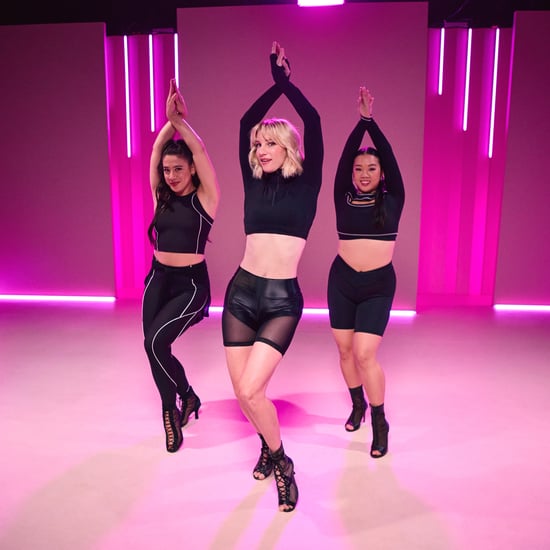How Kundalini Yoga Could Help Reduce Back Pain
Kundalini Yoga Might Be Helpful in Manageing Your Back Pain

Press pause on that power yoga for just one second: the answer to easing your chronic lower back pain might just be found in a Kundalini yoga studio.
At least that's what Dr. Sheri Dewan, MD, a board-certified neurosurgeon at Northwestern Medicine Central DuPage Hospital believes — she specifically recommends this type of yoga practice for a healthier spine — and for certain patients dealing with back pain.
While Kundalini yoga might be less discussed than say, Vinyasa yoga, it's been in practice for thousands of years. It's defined as a practice that activates energy stored at the base of the spine through breathing exercises, poses, chanting, as well as meditation.
"Many people associate Kundalini yoga with the back because it's believed that kundalini — the divine feminine energy that leads to spiritual awakening and that many yogis aspire to activate — lives at the base of the spine, in the shape of a coiled serpent," Katie Davidson, a certified yoga teacher based in Santa Cruz, California, explains.
Davidson adds that the chakras (or energy centres in the body) are aligned along the spine from the crown of the head to the base of the spine. "For this reason, many Kundalini practices in particular target the back and the spine."
While not specifically tied to Kundalini, yoga has even proven as effective in treating back pain as traditional physical therapy in certain studies.
Besides many of the poses opening up and stretching the spine joints and spaces, Dr. Dewan says Kundalini yoga could be beneficial for those suffering from poor spine health and/or back pain due to the breathing and meditation focus of the practice.
"Many patients that have neck, back, and mid-back pain suffer from chronic pain and are living with that disease," Dr. Dewan notes.
"That actually can take a huge toll on your mind psychologically and how you process information. One of the wonderful aspects of Kundalini yoga is the meditation and diaphragmatic breathing aspect, which is typically at the end of the classes. That can help a lot on how patients process pain and the ability to somehow separate the mind and body in some ways to process pain better."
Similarly, there is research that suggests that daily practice of mindfulness could reduce chronic pain sufferers' pain experience.
Some other elements typically emphasised in Kundalini yoga are chanting, gaze points, and gestures or arm movement, which could help with overcoming the mind, Davidson says.
"For instance, a well-known Kundalini meditation is 'breath of fire,' which involves quickly pumping your navel in and out, synced to sharp nostril breathing, with arms extended above your head," Davidson adds.
A testament to the meditation focus of Kundalini yoga, Davidson says these techniques are typically practiced anywhere from 11 minutes to even over an hour.
Dr. Dewan, who's actually in the works of developing a spine-based yoga program, generally recommends her patients to try practicing kundalini yoga at least once a week at home.
However, it's not a solution or pain-reducing method meant for everyone. So if you're dealing with back pain, it's best to speak with your doctor about the appropriate measures that need to be taken. You'll also want to ensure Kundalini yoga is a safe option for you, so be sure to consult with your doctor or a certified yoga instructor in person before performing any poses.
Below, Davidson highlights three simple at-home Kundalini yoga moves that target the spine.
Downward Dog
Cat Cow
"In Kundalini, this is a warm-up that is often done at a quick tempo, breathing in and out quickly as you would in 'breath of fire' to activate the spine," Davidson says.
On the exhale, reverse this movement, dropping your head and tilting your pelvis, and arching your back for Cat pose.









